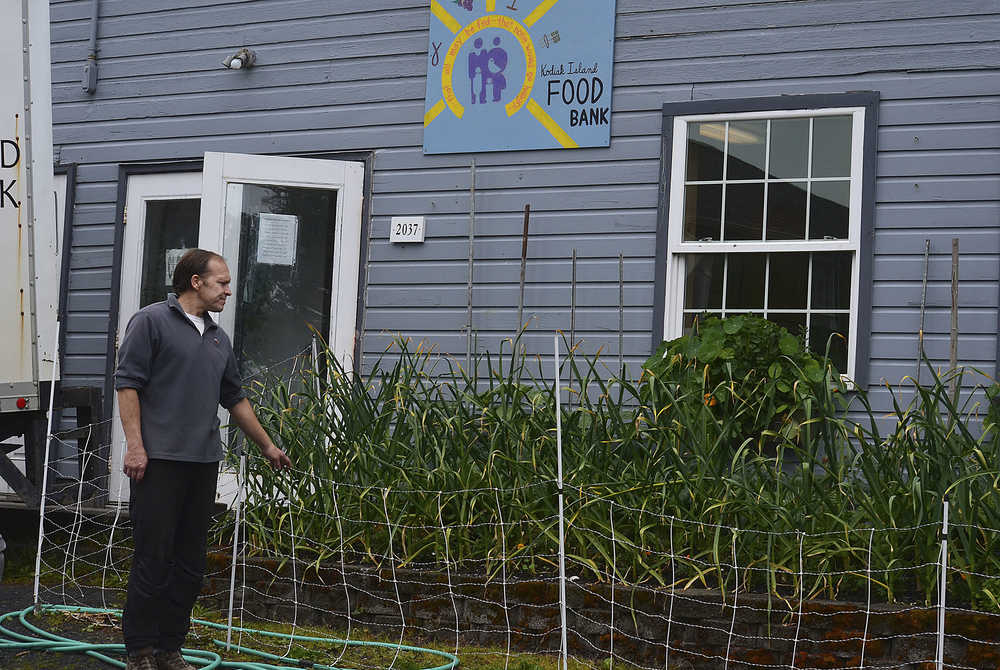KODIAK — Alexander von Tsurikov spends a lot of time hunting, but not with a rifle.
As director of the Kodiak Island Food Bank, Tsurikov hunts donations, making three or more rounds each day to local stores. He is on call all the time, and will make trips at any hour to pick up items stores may be giving away.
“It’s worth it because it’s so difficult to get food,” he said.
And the number of people in Kodiak needing food is growing, reported the Kodiak Daily Mirror.
The KIFB consistently serves 800 to 1,000 people each month. This April, the organization served 1,008 clients, the second-highest number in its history.
In total, 1,700 people are actively enrolled in the program, indicating they have needed food in recent months and meet the income requirements.
“When you think of the population of Kodiak, that’s a lot,” said Sarah Morrison, KIFB liaison with the Kodiak Baptist Mission, which oversees the food bank.
According to Pat Branson, director of Senior Citizens of Kodiak, the home-delivered meal program grew by 42 percent this year. She attributes this to an increasing number of seniors choosing to remain on the island after retirement.
In 2015, the Brother Francis Shelter served 26,500 meals to individuals in need.
Local nonprofit leaders point to a number of reasons for the increasing number of Kodiak residents requiring food assistance.
“I’ve seen, literally in my day, thousands of families wind up in financial trouble over broken cars,” said Monte Hawver, director of the Brother Francis Shelter.
Many seniors have limited retirement funds, which must cover housing, utilities, medical care and prescription drug costs, and more, on top of the high cost of food on the island.
“It’s really a balance act,” Branson said. “We have some of the highest costs in the state and in the country.”
Many of those visiting the food bank are only able to find part-time or seasonal employment, or have an injury or disability. A few are former Jackson Mobile Home Park residents, Tsurikov said.
“It’s been stressful,” he said. “It’s steady to between 40 and 60 families. (In prior years) you would maybe get 10, 12 families at one time and it was easy, relaxed. Now it’s tense. They have to wait. There’s a lot of people and it’s first-come, first-served.”
According to Morrison, KIFB will never turn away a client in need of food, but they have advised people to come back on a different pick-up day to ensure they can get all the food they need for the month when stocks are running low.
“Nothing is ever set in stone or concrete, and so you just always have to hope and pray that we’re going to continue to get those donations, and some weeks, we really just don’t have enough food and it ends up being government boxes and a lot of sugar-filled things,” she said.
The KIFB relies heavily on donations from local grocers, including the Coast Guard Commissary, Cost Savers, Walmart and Safeway.
These donations may increase soon. According to Safeway communications and public affairs manager Tairsa Worman, the store has been “working with the Food Bank of Alaska to roll out a new ‘Fresh Rescue’ program this August. This will include perishable and shelf-stable products, including produce, dairy, meat, bakery and dry items that will be donated for distribution at area food banks.”
Safeway currently limits donations to non-perishable, bakery and some frozen items.
Farther afield
The Food Bank has also faced difficulty in recent months finding transportation for food donations to rural communities. Local fishing boat captain Tony Lara helped deliver food to villages aboard the fishing vessel Cornelia Marie until his death late last summer.
Now, the Kodiak Area Native Association helps with deliveries some months by including food boxes on their flights to the communities, but there is no regular shipment.
Including all villages, the total weight of food boxes is 2,500 to 3,000 pounds.
“I’ve got 40 families in Larsen Bay, close to 40 in Old Harbor, 20 in Ahkiok, about 20 in Ouzinkie. I’ve got a couple seniors in Karluk. Before, I would feed them every month,” he said. “I just have to find somebody somewhere to get it out.”
In all, Kodiak has a number of programs working to help the increasing number of Kodiakans facing food insecurity, including the KIFB, SCOK, the Salvation Army, the Women, Infants and Children program, and the Brother Francis Shelter.
“We want a community that has a good quality of life, and that takes a variety of nonprofits,” Branson said. “One of the things Kodiak is very good at is we collaborate very well.”
Morrison said she wants to expand the network even more.
“I think the thing that we’ve really been talking about lately is how important it is to just be connected to the community, to have local partners,” she said.
“I think there are options. If we were to partner up with different groups and organizations around town, we could really make something happen that would benefit our community to a point where we’re helping them move forward and not relying on the Food Bank. Rather, provide them with the resources they need so that they can really move forward and sustain themselves.”

